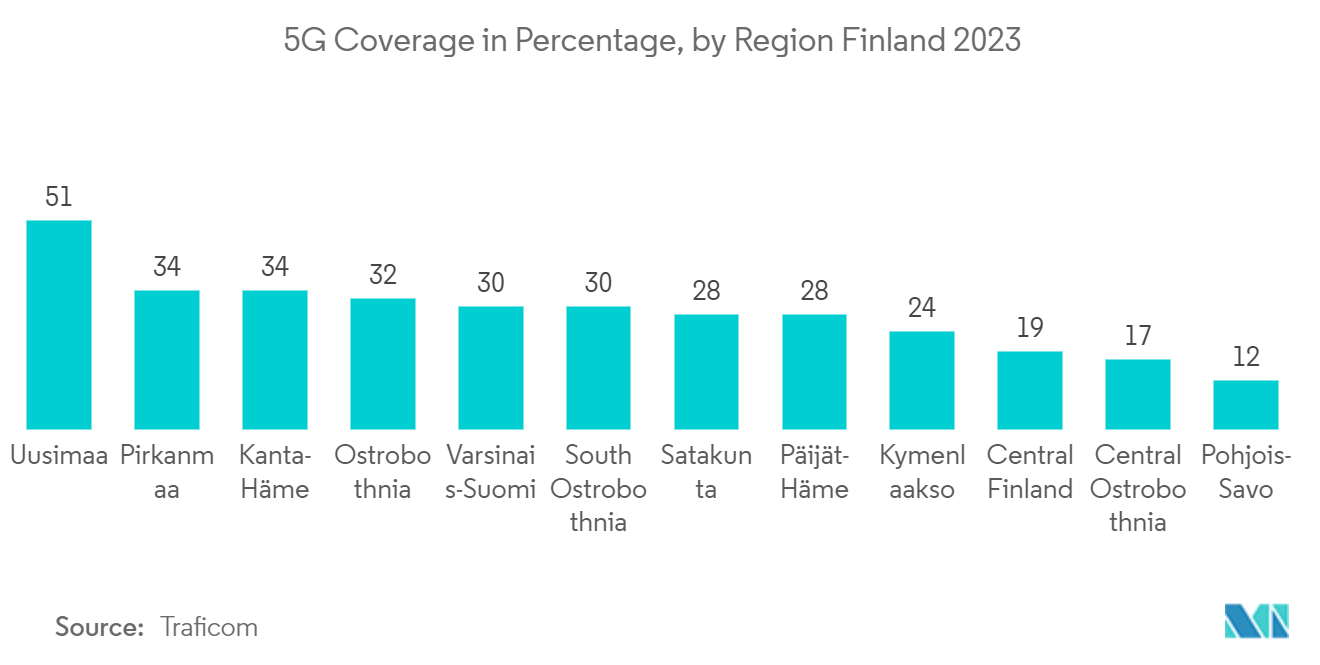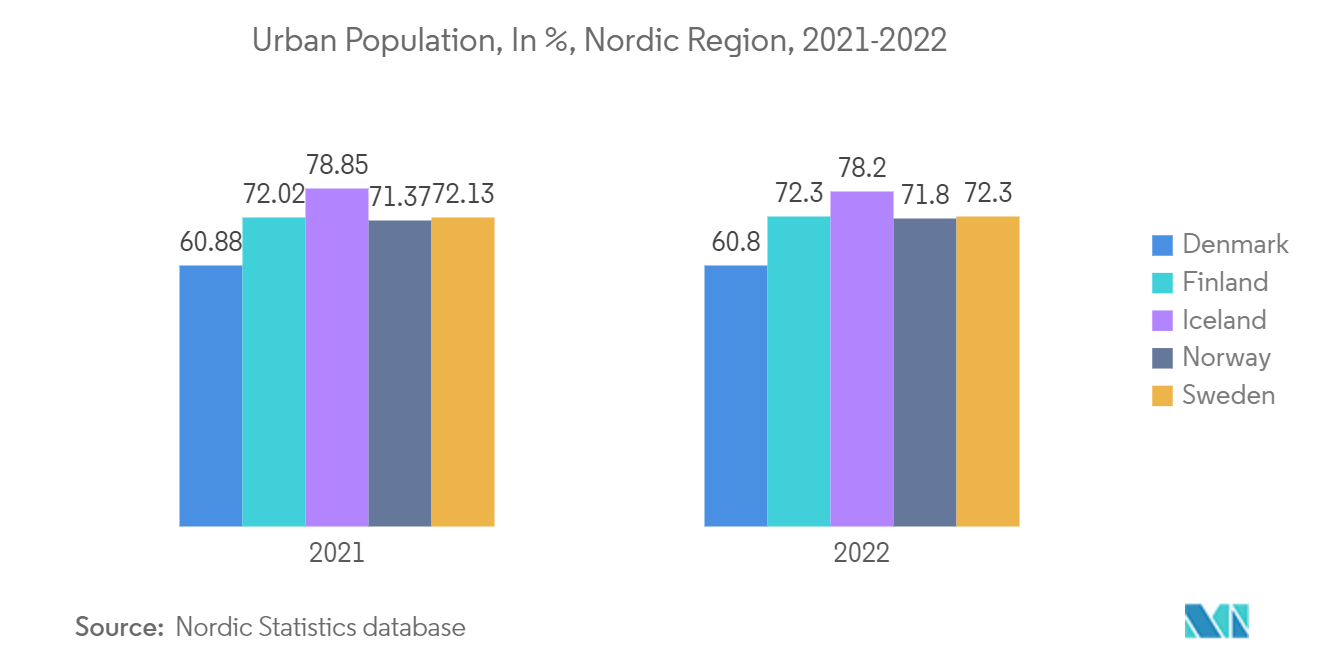Market Trends of Nordics Geospatial Analytics Industry
Introduction of 5G to Boost Market Growth
- Geoscience data and strong geographic analyses can substantially contribute to effective telecommunications services in the short and medium term. For instance, geospatial data can play an essential role in the fit-for-purpose planning and optimal deployment of networks and services and help ensure these networks are cost-effective and efficient.
- The use of 5G may also assist in addressing environmental challenges by means of technologies such as location intelligence and digital mapping. Increasing the energy efficiency of 5G, reducing GHG emissions, and using more renewables can be achieved by the Internet of Things' speed, connectivity, and data capacity. 5G could help broaden understanding of and improve decision-making about weather, vegetation, or waste management which is a significant driver for the need for spatial analysis.
- Further, the significant coverage, as indicated in the graph alongside the growing telecom company efforts to boost the coverage, is analyzed to increase the market growth rate during the forecast period. Tele2 and Telenor have set up a joint venture called Net4Mobility. In 2022, Tele2 and Telenor Sweden committed to accelerating the deployment of 5G networks to extend net4mobility's coverage to 90% of the Swedish population by the end of 2023 and in 2024.
- Telia Sweden aims to match the coverage of 5G with that of its 4G network by 2025 in cooperation with a long-standing partner, Ericsson. By 2023, the target of providing coverage for over 90% of the population with 5G services should be achieved; in the medium to long term, it would extend to 90% geographic and 99% global coverage.
- In 2023, the capital region Uusimaa, which includes Finland's capital city Helsinki, had the highest 5G coverage at 51 percent in Finland. Both Pirkanmaa and Kanta-Häme regions had a 34 percent share each. Lapland and Kainuu placed at the bottom, having only a two percent 5G coverage.

Real Estate and Construction is analyzed to hold a significant share in the market
- The graph indicates that the growing urban population significantly drives the demand for the real estate and construction industry. It is analyzed to boost the adoption of advanced technologies for effective outcomes, thereby contributing to market growth. Geospatial analytics determines the impact of population growth on energy, transport, and housing resources. Planners can visualize large datasets at high speed and scale by using Geospatial Big Data Analytics. It further allows for integrating and cross-filtering data from many sources to oversee factors, including how crime, education, public health, and housing/real estate results differ by location.
- According to Nordic Smart City Network, there are 19 smart cities connected in one smart network in the Nordic countries. Further, the growing emphasis on these cities with respect to climate change is analyzed to boost the construction sector, thereby contributing to the demand for geospatial analytics in the region.
- For instance, in March 2023, In Finland, Climate Cooperation was established between municipalities Vantaa, Kerva, and Jrvenp, as well as several companies, to reduce the region's carbon dioxide emissions. The Finnish Ministry for the Environment finances the project, while Vantaa City has acted as coordinator, and nearby Kerava and Jrvenp municipalities have been cooperating partners. It is an illustrative case of how the concept of Smart Cities has been promoted within the Helsinki Region, both economically as well as environmentally.
- As smart cities adopt geospatial infrastructure and all the understandings that come with it to create data-driven conclusions to serve the public better, the growth of these smart cities driving the demand for construction to accommodate the growing urban population in the region is analyzed to boost the market growth rate during the forecast period.


